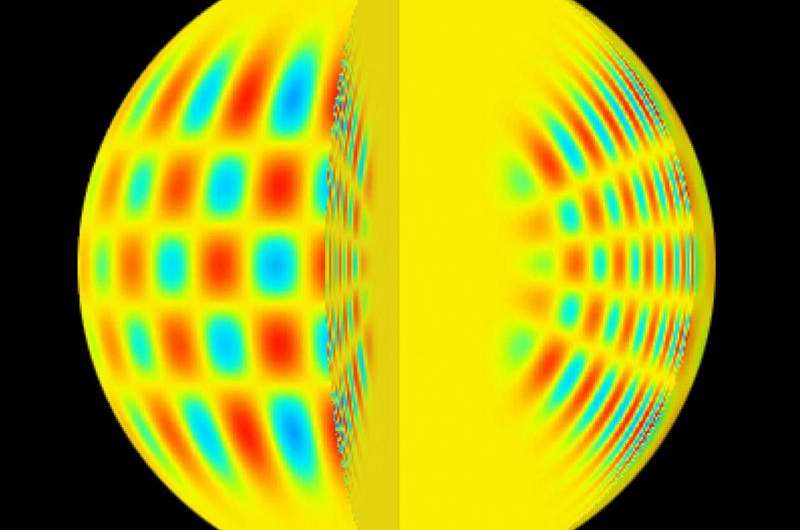Researchers question results obtained heretofore in the study of pulsating stars

The movement of gas inside a star causes seismic waves which in turn cause irregularities on the star's surface. These 'earthquakes' (or pulsations) produce periodic variations in the brightness of a star, and the study of those variations can reveal the physical structure and processes that take place inside. A group of researchers examined the tools used to interpret those types of data and found that the methods which have been utilized for decades are not universally applicable.
Several cases exist in which the study of pulsations (generically known as stellar variability) poses a problem: Stars with pulsation periods which no model can predict, others with an anomalous excess of pulsation modes, and finally cases where the modes of pulsation predicted by the models do not occur in reality.
"Faced with such problems, we decided to review the entire process of analysis, including the tools used to interpret the data," says Javier Pascual, researcher at the Institute of Astrophysics of Andalusia (IAA-CSIC) in charge of the project.
In so doing, the team bumped into a difficulty concerning what is known as periodograms. "The ideal scenario for the study of variability would be to have the chance to observe a star for an infinite extent of time and thus verify the frequency of its pulsation. Since this is impossible, we use periodograms to extract frequencies from a limited span of observation, assuming that the frequencies remain stable over time", says Javier Pascual (IAA-CSIC).
However, for the use of periodograms to be warranted there is one prerequisite: the star's light curve, which reflects increments and decreases in its luminosity, should vary progressively.
"Up until now, it was assumed that stellar pulsations were progressive, and we asked ourselves to what extent that was the case, because there are phenomena which could spark abrupt variations," says Pascual (IAA-CSIC). The team found, indeed, that stars HD174936 and KIC006187665, observed by the CoRoT and Kepler satellites, respectively, presented abrupt variations, which is an unequivocal sign that the tools of analysis used until now are not always adequate.
More information: J. Pascual-Granado et al. Limits in the application of harmonic analysis to pulsating stars, Astronomy & Astrophysics (2015). DOI: 10.1051/0004-6361/201425596
Journal information: Astronomy & Astrophysics
Provided by Instituto de Astrofísica de Andalucía




















